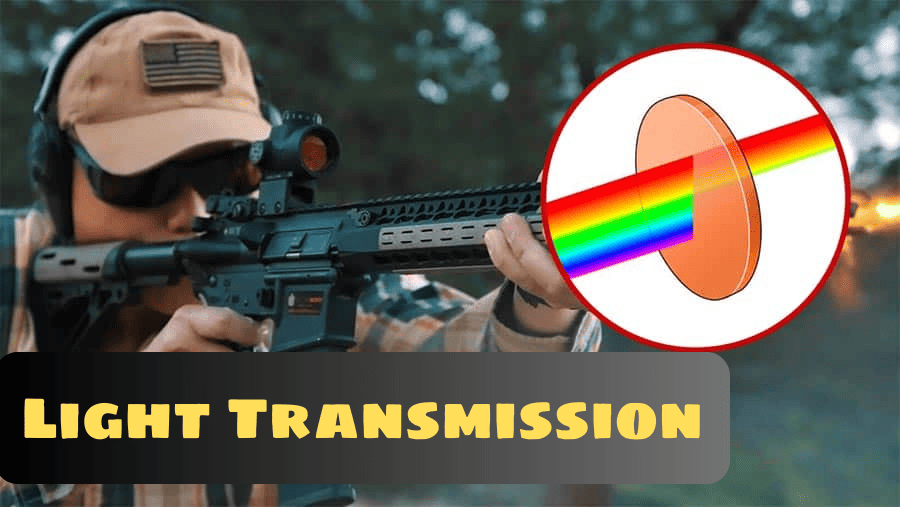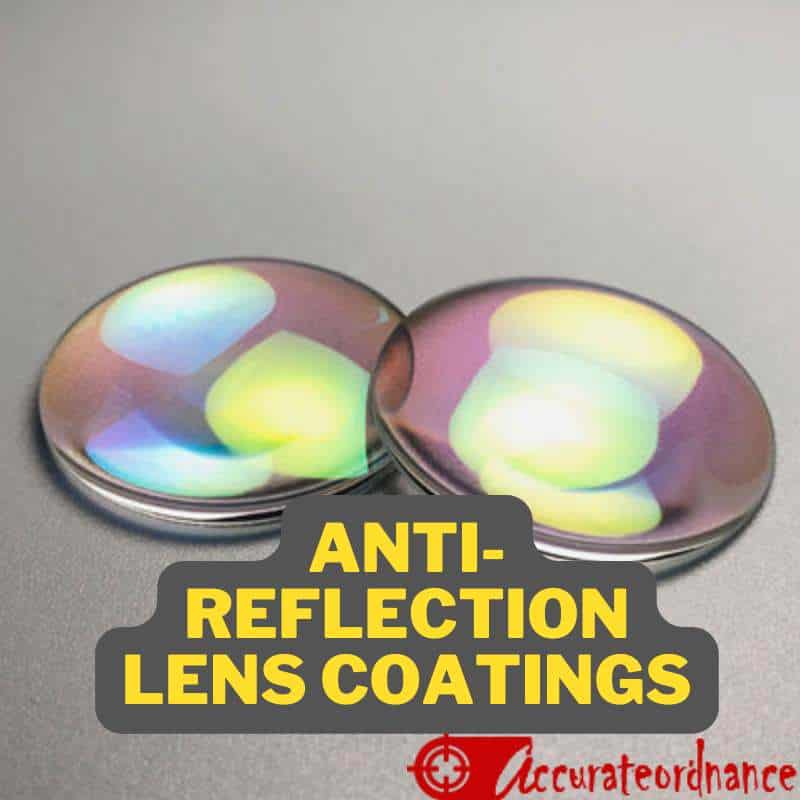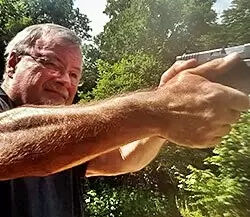Riflescopes are essential for hunters and shooters who want to aim precisely at their targets. They have come a long way in terms of technology and design, offering users a range of features to improve their shooting performance.
One of the critical factors that determine the quality of a riflescope is its light transmission which refers to the amount of light that passes through the scope’s lenses. The higher the percentage of light transmission, the brighter and clearer the image. This can be particularly important when shooting in low-light conditions, such as during the early morning or late evening.

Light transmission is an important aspect of a riflescope because it can directly impact the shooter’s ability to hit the target. In low-light conditions, a scope with high-light transmission can make a significant difference in terms of accuracy. A bright and clear image can also help shooters make precise adjustments to their aim, which can be crucial when shooting at longer distances.
Rifle scope light transmission is affected by several factors, including the quality of the lenses, the coatings applied to the lenses, and the size of the objective lens. Let us go deeper into the topic: Rifle scope light transmission: what it is and why it matters.
What is Rifle Scope Light Transmission?
Light transmission refers to the percentage of light that passes through the lens of a rifle scope and reaches the shooter’s eye. The higher the percentage of light transmission, the clearer and brighter the image you will see through the scope. This is especially important in low-light conditions, such as at dawn or dusk, where every bit of light is essential to make a shot.
When shopping for a rifle scope, you’ll often see a number associated with light transmission, usually ranging from 80-95%. This number represents the amount of light that passes through the scope’s lens and reaches your eye. So, if a scope has a light transmission rate of 90%, that means that 90% of the available light is making it through the lens and into your eye.
Why Does Light Transmission Matter?
Light transmission is critical for accurate shooting, especially in low-light conditions. The more light that passes through the scope, the brighter the image you’ll see. This can be the difference between making a shot and missing your target.
If you’re hunting or shooting at dawn or dusk, or in heavily wooded areas where light is limited, a scope with high light transmission is essential. A scope with poor light transmission will produce a dim and blurry image, making it challenging to make a precise shot.
In addition to low-light conditions, light transmission is also essential in adverse weather conditions, such as rain, fog, or snow. A scope with high light transmission will cut through these conditions, providing a clear image, while a scope with poor light transmission will struggle.
Here are some other reasons why rifle scope light transmission matters:
Improved Clarity
A rifle scope with high light transmission allows more light to enter the scope, resulting in a brighter and clearer image. This is of particular importance in low-light conditions when visibility may be compromised. With a scope that has high light transmission, the shooter can see the target more clearly.
Better Accuracy
When shooting at longer distances, even small adjustments to the aim can make a significant difference in hitting the target. A rifle scope with high light transmission can provide better visibility of the target, allowing the shooter to make more precise adjustments to their aim. This can be crucial for long range shooting, where accuracy is essential.
Increased Range
A rifle scope with high light transmission can help shooters see their target clearly at longer ranges, allowing them to take accurate shots at greater distances. This is important for hunters who may need to take shots at games that are farther away.
Consistent Performance
Light transmission can vary across different types and models of rifle scopes. Choosing a scope with high light transmission ensures consistent performance, regardless of the lighting conditions.
Versatility
A rifle scope with high light transmission can be used in various shooting conditions. It can be especially helpful when hunting, where lighting conditions can vary depending on the time of day or weather. With a high-light transmission scope, the shooter can be confident that they will have a clear and bright image regardless of the lighting conditions.
How to Measure Rifle Scope Light Transmission?
Light transmission is typically measured using a spectrophotometer, which is a specialized instrument that measures the amount of light that passes through an object. This instrument can measure light transmission across various wavelengths, allowing for a more accurate assessment of the object’s performance.
When comparing different rifle scopes, it’s important to look at their light transmission values. A scope manufacturer may list this information on their website or in the product specifications, while others may only provide a general description of their scope’s performance. Here are the steps to measure rifle scope light transmission:
Choose a light source
The first step in measuring rifle scope light transmission is to choose a consistent and reliable light source. A light box or light meter can be used to provide a consistent light source for accurate measurements. The light source should be positioned at a consistent distance from the scope and should be bright enough to provide accurate readings.
Set up the scope
Mount the scope onto a rifle or a mount that can be fixed in place. Position the scope in such a way that the front of the scope faces the light source. The scope should be securely mounted and positioned in a way that does not allow for any movement during the measurement process.
Position the light meter
Place the light meter behind the scope so that it captures the light that passes through the scope. The light meter should be positioned at a consistent distance from the scope and should be held in place to prevent movement during the measurement process.
Take a measurement
Turn on the light source and record the amount of light that is transmitted through the scope. This can be done using a light meter that displays the amount of light received. The measurement should be taken several times to ensure accuracy and consistency.
Calculate the light transmission
Once the measurements have been taken, the light transmission of the scope can be calculated. To do this, divide the amount of light that enters the front of the scope by the amount of light that reaches the light meter. The result is the percentage of light transmission for the scope.
It’s important to note that measuring rifle scope light transmission is not an exact science, and the results can vary depending on a variety of factors, including the quality of the light source, the quality of the lenses, and the position of the scope and light meter. To ensure accurate results, use a consistent and reliable light source, position the scope and light meter in a consistent manner, and take multiple measurements to ensure accuracy and consistency.
Note: Most manufacturers just give a single percentage of light transmission for their scope. In reality, this should not be so. Light transmission rate can be measured at specific wavelengths. So what we should have is a graph showing the light transmission rate of that scope at different wavelengths rather than a single light transmission rate of, let’s say, 90%, which may not be true for other wavelengths.
Factors that Affect Rifle Scope Light Transmission
Several factors can affect a rifle scope’s light transmission. Here are some of the popular ones;
Glass Quality
The glass quality in a rifle scope significantly impacts the light transmission rate through the scope. High-quality glasses allow more light to pass through and reach the shooter’s eye, resulting in a brighter image.
The quality of the glass can be affected by several factors, such as the purity of the glass material, the precision of the manufacturing process, and the quality of the coatings applied to the glass. High-quality glass is typically made from materials with low impurity levels, which improves its transparency and reduces the amount of light that is scattered or absorbed.
The manufacturing process also plays a crucial role in the quality of the glass. Precision manufacturing techniques such as grinding and polishing help ensure that the glass is free from defects and has a uniform thickness, which can affect how light passes through the material.
Lens Coating
Lens coating can have a significant impact on the light transmission rate through a rifle scope. The coatings are applied to the lenses to improve their optical performance and to reduce unwanted reflections and glare that can interfere with the shooter’s view.
Anti reflection coating, for example, can help increase the amount of light that is transmitted through the scope by reducing the amount of light that is reflected off the lens surface. When light passes through an uncoated lens, some of it is reflected back at the shooter, reducing the amount of light that reaches the eye. Anti reflection coating help reduce this effect, allowing more light to pass through the lens and reach the eye.

Different types of coatings can also improve color fidelity, contrast, and image sharpness. For example, a multi-coated lens can help reduce internal reflections and glare, which can help improve the overall image quality. Coatings can also help reduce the effects of chromatic aberration, a type of distortion that can cause color fringing around edges of objects in the image.
The thickness and composition of the coatings can also affect their optical properties. Thicker coatings can help reduce reflections but can also reduce the amount of light that passes through the lens. High-quality coatings are typically designed to maximize light transmission while also reducing unwanted reflections and glare.
Objective Lens Diameter
The objective lens diameter can have a significant impact on the light transmission rate through a rifle scope. The objective lens is the lens at the end of the scope farthest from the shooter’s eye (ocular lens), and its size is typically given in millimeters. A larger objective lens diameter (56mm scope) can allow more light to enter the scope and be transmitted to the shooter’s eye.
This is because the objective lens is responsible for light gathering. More light gathering can result in a brighter and clearer image, especially in low light conditions. Conversely, a smaller objective lens may not collect as much light, which can result in a dimmer image and reduced visibility.
However, the size of the objective lens is not the only factor that affects light transmission. Additionally, a larger objective lens can also affect the weight and size of the scope, making it larger and potentially more cumbersome to use. The optimal objective lens size for a given application will depend on factors such as the intended use of the scope, the lighting conditions in which it will be used, and the preferences of the shooter.
Magnification
Magnification can have a minor impact on the light transmission rate through a rifle scope. Although the amount of light that enters a scope is determined more by the diameter of the objective lens, and lesser by the magnification.
However, the apparent brightness of the image viewed through the scope can change as the magnification is increased. At higher magnification, the image may appear darker and less bright. This is because the same amount of light is spread over a larger area, resulting in a dimmer image.
Additionally, the quality of the lenses and coatings in the scope can also affect how the image appears at different magnifications. High-quality lenses and coatings can help ensure better light transmission even at a higher magnification, while a low-quality optics may produce a dimmer image.
Therefore, it’s not just about high magnification or low magnification. A scope can still give a somewhat clear image with a high magnification.
Note: Fixed magnification scopes usually have a better light transmission compared to a variable magnification scope because of the amount of lens in the scope. More lens means more magnification, and this will result in a darker image because each lens will draw some amount of light that is being transmitted.
Exit Pupil
The exit pupil is the diameter of the light beam that exits the eyepiece (ocular lens) of a rifle scope and goes into the shooter’s eye. The size of the exit pupil is determined by the magnification of the scope and the diameter of the objective lens. A larger objective lens and a lower magnification will result in a larger exit pupil.
The exit pupil plays a crucial role in determining the amount of light that is transmitted through a rifle scope. The larger the exit pupil, the more light will be transmitted to the shooter’s eye, resulting in a brighter and clearer image.
However, if the exit pupil is smaller than the diameter of the shooter’s pupil, some of the light will be blocked, and the image will appear dimmer. This is why it’s important to select a rifle scope with an exit pupil that matches the diameter of your pupil. In general, a rifle scope with an exit pupil of at least 5mm is suitable for most people, as this is the average diameter of the human pupil in low-light conditions.
Environmental Conditions
Environmental conditions can have a significant impact on the light transmission rate through a rifle scope. The amount of light that reaches the scope can be affected by various factors such as weather, time of day, and the presence of atmospheric pollutants such as dust and smoke.
In low light conditions, such as early morning or evening, the amount of light available is reduced, and this can impact the light transmission rate through the scope. The reduced light may make it harder to acquire and engage targets, especially during long range shooting.
Weather conditions can also have an impact. For example, rain, fog, and snow can reduce visibility and limit the amount of light that reaches the shooter’s eye. In addition, the presence of dust or smoke in the air can scatter light and reduce image clarity.
In extreme cases, environmental conditions can completely prevent light from reaching the scope, such as during a total eclipse, or a blackout caused by heavy smoke or dust.
In order to maximize the light transmission rate through a rifle scope, shooters should consider the environmental conditions in which they will be using the scope. This may include selecting a scope with larger objective lenses to collect more light or choosing a scope with a high-quality lens coating that reduces glare and improve image clarity. Shooters should also take into account the weather and lighting conditions in which they will be shooting and adjust their equipment and technique accordingly.

Mike Hardesty is a published freelance gun writer. He also possesses specialized expertise in rifle scopes With dozens of articles and reviews published in Pew Pew Tactical, Snipercountry.com, and TTAG (The Truth About Guns), Mike is considered a firearms expert. His special area of expertise is handguns.
Mike is a long-time shooter. He has been punching paper targets, taking deer and other game and shooting at competitions since about 1975. Other related pursuits include reloading and bullet casting. He currently reloads for over 10 calibers, both handgun and rifle. His reloads, particularly for 9mm, were in great demand during the height of the ammo shortage among family and friends. He donated hundreds of rounds to informal shooting sessions. He was quoted as saying “I do not sell my reloads but I sure will help my guys shoot ’em for free!”. He has a few cherished firearms that he has inherited or otherwise procured — those are his favorites.
He earned B.S. and M.S. degrees from Indiana State University in 1974-1975.
He’s a firearm experts and is the founder of mhardesty.com.
